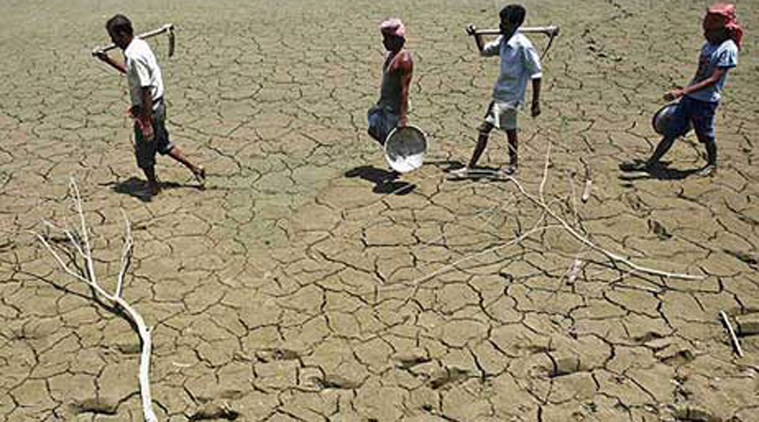Rajasthani reality
Bad policies for decades give urban Indians hefty subsidies on water supplied to their homes while rural Indians buy it at exorbitant rates from tankers, or drink water the colour of mud from village ponds.

Why has this situation been allowed to exist for so long? Why have we not learned from countries like Israel how to find water in states that are as arid as Rajasthan? (Representational Image)
Whenever I feel bogged down by the supposedly big issues that Indians who live in big cities become momentarily obsessed by, I travel into rural India for a reality check. I did this last week in villages that lie deep among the sand dunes of western Rajasthan and found that nobody I met mentioned Rafale or the Ram Mandir. The drought in these parts is so severe this year that what obsesses people here is how they are going to find water. The situation is desperate because the rains failed completely.
Last time I wrote about a similar reality check, I was put through a full inquisition by BJP denizens of Delhi’s drawing rooms and high officials in the Prime Minister’s office. So this time, before going any further, I shall name the villages I visited. I went to Tolesar, Navatala, Jawaharpura and Jasoron ki Beri in the district of Barmer, and Teliwada, Ranjitpura and Chainpura in the district of Jaisalmer. On the way to these villages I drove past fields and fields of ravaged crops. The bajra (millet) crop that is yellowing in the thirsty, khaki land is now fit only for fodder. Sadly, water sources in these villages are drying up so rapidly that animals could start dying in weeks. What makes people more despondent than usual is that they know that once the election campaign begins for the Rajasthan Assembly, nobody will be interested in their plight.
The criminal neglect that has created a situation in which the poorest, rural Indians pay more for water than privileged city Indians is not new. Bad policies for decades give urban Indians hefty subsidies on water supplied to their homes while rural Indians buy it at exorbitant rates from tankers, or drink water the colour of mud from village ponds.
Why has this situation been allowed to exist for so long? Why have we not learned from countries like Israel how to find water in states that are as arid as Rajasthan? I do not know.
What else did I discover on this reality tour? I found that Narendra Modi’s efforts to drag rural India, kicking and screaming, into the digital age are not working that well on the ground. Subsidies that were easily accessed from accounts in village post offices are now being transferred directly to bank accounts so far from where the beneficiaries live that they waste a day travelling by the only bus to a bank that can be as far as 50 kilometres away. Once there, they often find that they cannot get inside because thousands of people are waiting their turn. So to collect their meagre subsidies from the MNREGA and other grandiose government welfare schemes, they can end up spending nearly half on travel. This is without counting the loss of their daily wages. More rural banks was the demand in every village I visited.
In every village I also met young men impatient for jobs. Farming and animal husbandry were the pillars of the economy and because of the depredations of cow vigilantes, this second pillar has begun to crumble. In Muslim villages I was told that they were giving up cattle farming because they were unable to transport animals from one market to another without being waylaid by vigilantes. Another grim consequence is that the menace of stray cattle is now so huge that those who can afford to, like the Jat farmers in Jasoron ki Beri, put up wire fencing around their fields.
Does this grim picture indicate that Narendra Modi has become hugely unpopular? No. He continues to retain a surprising measure of popularity because he is seen as a man of integrity who in the words of many I spoke to “is trying to repair the damage done by 70 years of bad policies”.
The faith in Modi is so great that many believe that even Mukesh Ambani’s Jio revolution (and it is a revolution) has happened because of him. Deep in villages buried behind sand dunes, 4G is available to those who subscribe to Jio. This also means that people have a greater knowledge about the issues of the day than they did before because more and more rural people now have access to data.
Another reason for Modi’s popularity remaining relatively intact is because in this part of rural India Rahul Gandhi continues to be seen as a sort of ‘clown prince’. In the two Muslim villages I visited, there was more acceptance of him but even here I found that people smiled when I asked if they would choose Rahul over Modi if that choice was put before them. To tell you the truth, the desperation for water is so great that I was a little ashamed to ask too many questions about political leaders. There is a water emergency that needs urgent solutions today.
Follow Tavleen Singh on Twitter @ tavleen_singh
For all the latest Opinion News, download Indian Express App
More From Tavleen Singh
- Can the RSS change?The ugly truth is that the colonisation of India has continued with greater success after the British left, mostly because they left behind a colonised…
- Fifth column: In defence of MallyaInstead of competing to distance themselves from big business our political leaders should explain to the people of India why a company that produced 40…
- The first lynchingThree years after the murder of Mohammad Akhlaq, there is no remorse in his village. There is a sense of menace...







































No hay comentarios:
Publicar un comentario